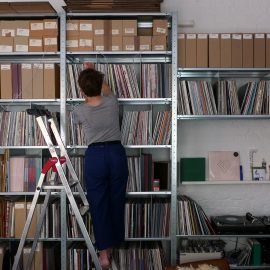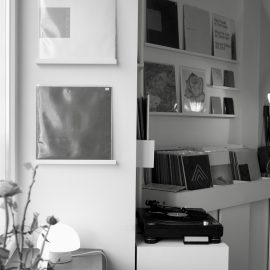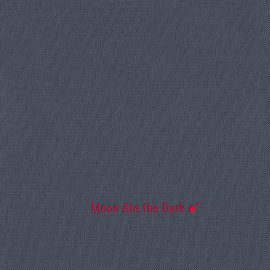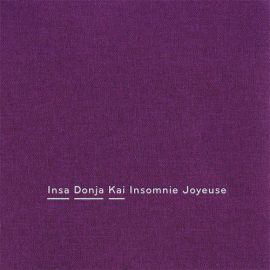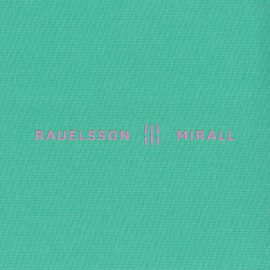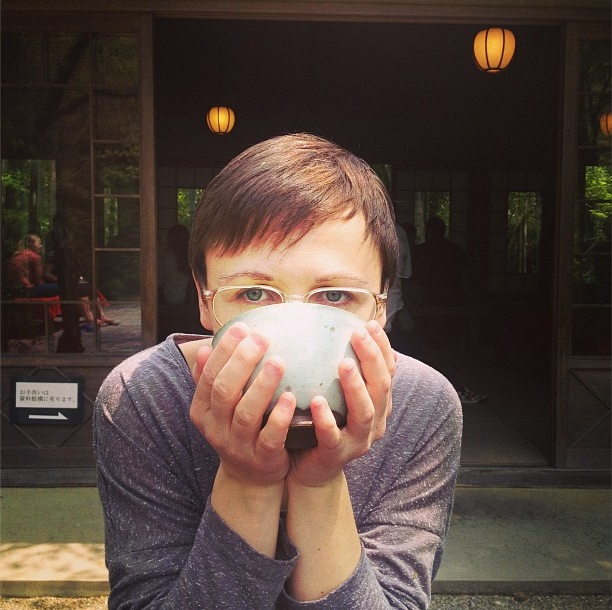
Hi Monique… who are you, where are you, and what have you been up to lately?
Hi there, I’m a small girl running a small record label called Sonic Pieces. We are based in Berlin, Germany. This year has been pretty exciting and busy so far. I’ve been working on album releases by two lovely Norwegians, Otto A Totland and Erik K Skodvin, who are also known as Deaf Center. We also toured Japan together in April joined by Spanish artist Rauelsson whom I’ve released a record with last year. It’s been amazing and I can’t wait to go back.
So when was the first time that you got involved with music?
I had an early interest in music. When I was teenager I used to listen to the radio a lot and was compiling cassettes. I grew up in a tiny village in the middle of Germany and have been kind of an outsider with my musical taste. When I left for studies I got to know more like-minded people which was great for new input and exchange. My taste and interest have been growing and developing over the years, and especially the move to Berlin was a great opportunity to get more actively involved with music and meet a lot of great artists and people who are running labels etc.
Do you play any instruments yourself?
No, I don’t. I took guitar lessons for a very short time but gave up soon. I guess there were always other parts of the music circle I was interested in more. Also I rather feel like concentrating on a few things and do them properly instead of having too many projects at once.
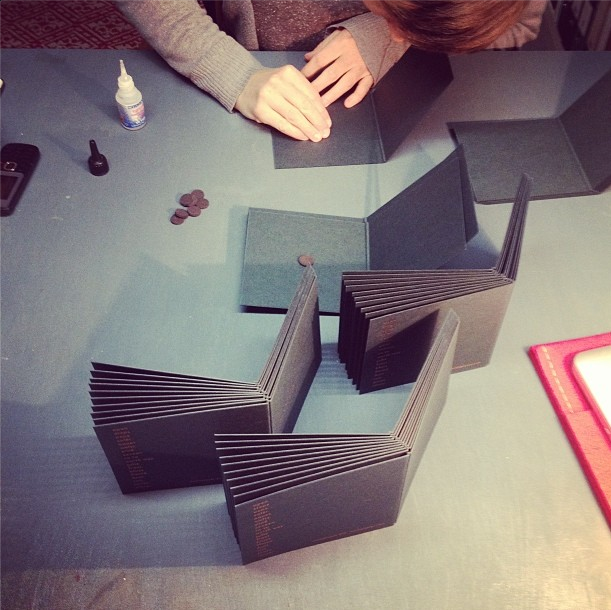
How was the label born, and how did you come up with the name?
Everything happened more or less by accident and through a process of doing things that led to other things. Shortly after I moved to Berlin in 2002 I started working for a community radio in my free time. From 2005 to 2009 I was running a monthly show for which I have been doing interviews with artists, label owners and local promoters. It was a good opportunity to meet people.
At the same time I also started making the CD packages. I had burned CD-R copies of the interviews and was actually looking for a jacket that would make for a nice gift to the people who participated. Since I couldn’t find anything that met my standards, I thought to create my own packaging. So the first jacket I made in early 2006 and this was already very close to the Sonic Pieces covers you know today. I got a lot of great feedback, so I kept making them.
In 2007 I saw Nils Frahm performing in Berlin and it totally blew my mind. I had no idea who he was but I needed to find out, so I approached him. Some month later I invited him to play a show with Library Tapes for which I also made a 3inch CD-R for promotion. Since my radio show was called schall + raum which means sonic + room, I named the promo disc sonic pieces 001 without really thinking about it too much. Then we also made 50 copies with a recording of the concerts, mainly for the artists and I sold a bunch through myspace back at that time. All of a sudden I got some demos, which was pretty funny since I wasn’t even aware of the fact that I had started a record label.
Later I also released a 100 CD-R edition of a Konntinent EP. And when Nils was about to release his album ‘The Bells’ on Kning Disk and go on a tour through Europe with Peter Broderick in 2009, he said it would be great to have another record for the merch table and that he was thinking of making 100 copies of ‘Wintermusik’ and maybe I could create the covers for it. I already knew this album for a good while and thought it deserves a proper pressing and bigger run. It wasn’t hard to convince Nils and that’s when I knew that I had to take Sonic Pieces more serious as a label.

Do you remember the very first official Sonic Pieces release? Can you compare the initial effort to the current ongoing process?
Even though I made three CD-Rs before, I would call ‘Wintermusik’ by Nils Frahm my first proper release. It was the first CD for which I took the financial risk of a real pressing, which also involved the need to look more into distribution and promotion possibilities. Of course everything was new and there were lots of things to figure out and set up, which later become more of a routine. But it’s a misbelief to think that it’s getting easier with time. Even though certain things do get easier, in general there are always new surprises waiting and new issues to deal with. It’s a constant development and process of learning. Sometimes I think we’ve been through most things that could happen or go wrong, but then with the next release for sure there’s new problems popping up. It remains challenging. There are always new tasks and the work is definitely getting more than less.
How would you describe the output of the label to those unfamiliar with your releases?
That’s always the worst question to be honest. I’m very bad at describing or categorising music. There’re definitely a lot of piano and strings involved, but I would say much of the music is moving in between chairs. If you want to get an objective impression I recommend to have a listen. You can stream most of our releases through our website and soundcloud.
Do you feel that the sound has changed over the years?
I believe the sound is developing and growing with every new release. Each artist has its very own characteristics and even though some releases are similar or using the same instrumentation there’s also something unique about them. But at the same time I also feel there is a certain label sound to it that connects all the records in a way.
How do you go about deciding what to put the money and effort into next?
First of all I have to feel confident about the music of course. It needs to connect with me somehow and should have some kind of uniqueness to it while it still works within the label catalogue. Also it becomes more and more relevant to have a good communication with the artists. It’s so important you understand each other and have a common language and mindset. Optimally I have the possibility to meet the artist in person, which of course isn’t always possible, but luckily we have phones and skype these days at least. I also appreciate to keep working with artists and do follow-up records of which we will hopefully see more in the coming years.
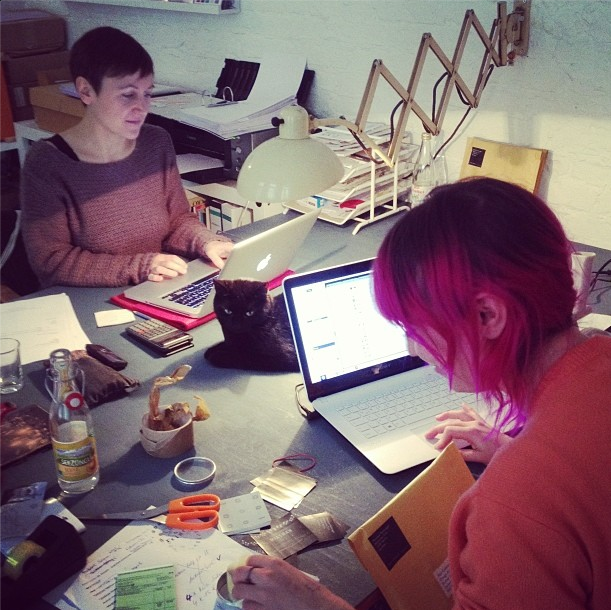
Is there someone that you would love to sign?
I wouldn’t say we sign artists here at Sonic Pieces. Typically we agree on one release and in case both the artist and I feel like working together on another record that’s always a possibility, but we don’t sign contracts for several releases. Of course there are artists I admire a lot and it would be lovely to work together at some point, but it barely happens that I take the initiative to get in touch. I’m usually rather passive when it comes to that.
You’re about 20 releases in, is that right? If you could go back in time, is there anything you would change?
I just released catalogue number 20, yes. If you deduct the first three CD-Rs then it’s only 17 releases, but instead you may add four 7inch vinyl and we have 21 – one of my favourite numbers. Of course hindsight is easier than foresight. For sure there are certain things that could have been done differently, but in the end it’s all a process of learning and experiencing, so I don’t regret anything.
You still do a lot of hand made packaging, right? Can you tell us about the choice and the process?
Yes, the process of making the packaging by hand hasn’t changed much since the start, although I order in more pre-cut material now. The first step is usually to decide on the colour for the cloth. This I do together with the artist. Then I pass on a sample to Torsten at FELD, who’s been doing the layout for Sonic Pieces since ‘Wintermusik’. At the same time I start crafting the packages. I use two cardboard squares and wrap them into the book cloth. Then the covers go to a local factory that does the embossing. After I get them back I line the inside with paper and the jacket gets its button which holds the CD, the limited stamp and signature. Then I assemble it with CD, booklet and protection sleeve. For the Dictaphone release we made a video of the whole process which you can watch on vimeo, it’s in double speed.
The vinyl jackets I craft as well. I use the same cloth as for the CD covers which also gets the embossing. The cardboard is pre-cut with an opening in the middle where I paste in the cloth before I glue the jacket together.
And who takes care of all the promotion, shipping, inventory, and all the other fun stuff?
I work closely together with Erik at Miasmah. We also share offices and a webshop. Since August last year we have an assistant called Erin helping us out two days a week which is great. She’s mainly working with mailorder, social networking and promotion. Most of the other stuff including all the accounting and inventory I do myself and also I take care of ordering all the Miasmah releases. Luckily we have Morr Music here in Berlin who’s handling the main part of the distribution for both labels. And I’m also very happy to work with p*dis who are distributing Sonic Pieces in Japan.
What about pressing vinyl? How do you decide what gets the special treatment?
It took a while to figure out how to transfer the CD artwork into the vinyl packaging without being too time-consuming and expensive, so up to catalogue number 11 all releases were only on CD. Now the decision about having a vinyl or not is mainly a matter of demand estimation. I would love to have everything on vinyl, but to make it economically feasible I need to be able to sell 300 copies. For some releases that’s easy, for others it isn’t. It can help if an artist is touring a lot and is selling a good bunch of copies when playing live. Sometimes I also release a double vinyl package if an artist has a follow-up album on the label.
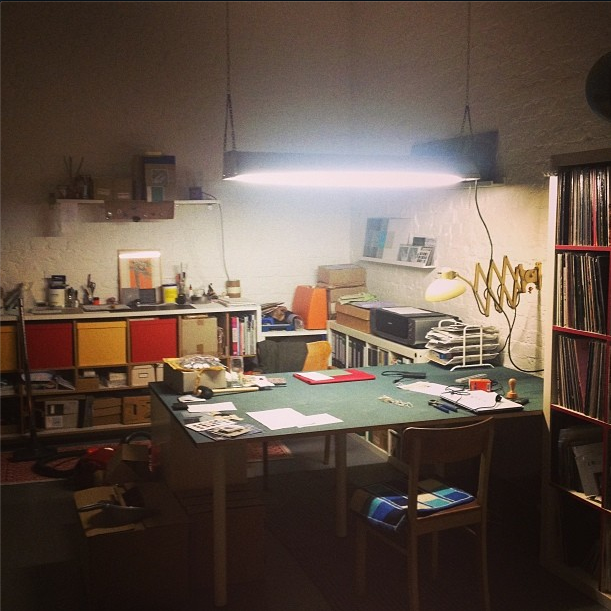
Can you talk a bit about the economics of running your label in this current environment?
I guess the concept of Sonic Pieces works pretty well in these times, but when I started the label I didn’t really think about it. Most people who are still buying physical releases are collectors and it seems they appreciate special items and limited editions. So if you are working within a niche market, which we do, it makes a lot of sense to rather do limited runs with extensive packaging or special features instead of trying to go for a bigger scale. It helps to sell the records faster and get liquid resources back earlier to reinvest.
On the other hand the pricing policy of pressing and printing plants works totally against small runs. Ordering 300 or 500 copies of a CD for example almost makes no difference. Just add another minor amount and you get 1000. It’s even worse with print products. So everyone’s trying to force you to get more than you need and you end up with lots of back stock that gradually fills up your storage space.
Some of the Sonic Pieces releases sell out pretty fast and we often get asked why this certain release or format isn’t available anymore and why we don’t do a repress. We do 2nd edition CDs with simpler packaging sometimes, but to be able to get break even with this we need to sell at least 200 copies which isn’t easy for most releases. It only works if we also have enough support from our distribution partners. Furthermore I noticed that many Sonic Pieces fans and regular customers appreciate the special and limited character of the releases, so doing more of those also wouldn’t do it justice. Beside that I simply don’t have the capacity to make more.
After the ‘Pinô’ LP by Otto A Totland was flying out in no time earlier this year I was looking into options for a vinyl repress as well, but I haven’t found a good solution yet to get something produced for a reasonable price that would still work within the Sonic Pieces style.

Any lessons that you would share with someone who aspires to run a label one day?
One of the most important things for starting a label is having a clear and strong concept. I would even say it is crucial to create a brand that is recognizable. Otherwise I can just recommend to be very selective with what you put out, rather release less, pay attention to good quality and be prepared for a lot of work and little income.
What are you working on right now?
I was hoping to work on my next release during the summer, but unfortunately I have to postpone this one for reasons that are out of my control. So I need to reschedule things a little bit and make the best out of the sitution. I guess I could also see it as a lucky coincidence to have a little more time during the summer for once. However it never get’s boring really and there are other projects to work on. We just have a new Miasmah release out by Shivers, a trio of Machinefabriek, Gareth Davis and Leo Fabriek. August will see the first release in our new Pattern series, a mini album by Deaf Center. Also Erik and I want to get a better storage system and reorganise our stock. And last but not least I still need to finish my taxes, which definitely isn’t the funniest project.
Thank you for your time, Monique… any list words for the readers of Headphone Commute?
Thank you for reading the interview and following this wonderful magazine! I feel lucky to have the possibility of sharing content through platforms like Headphone Commute. There are small groups of people all around the world who are interested in what we are doing. Each one by itself wouldn’t be big enough to make labels like Sonic Pieces feasible, but through the chances the internet provides us with these days, you can combine them all and make it work.
